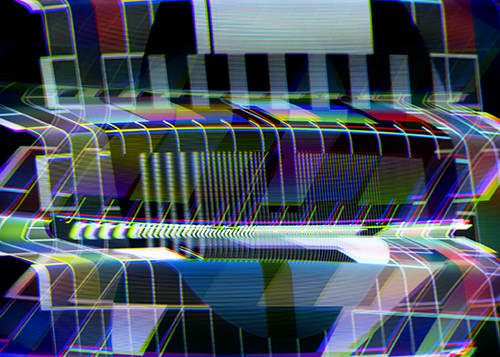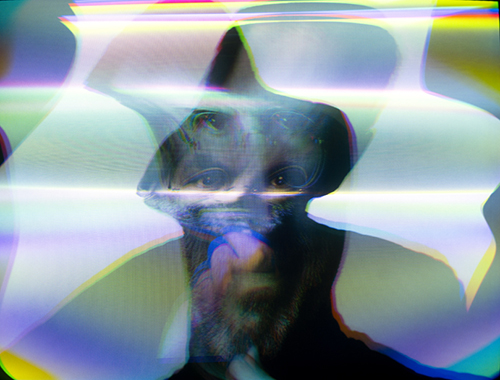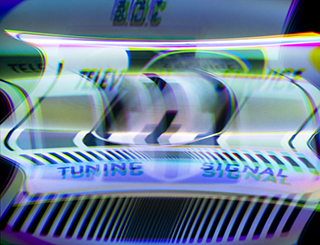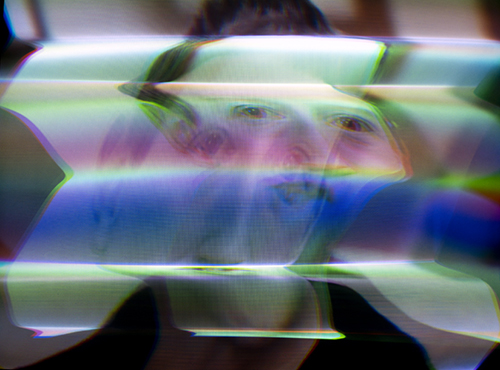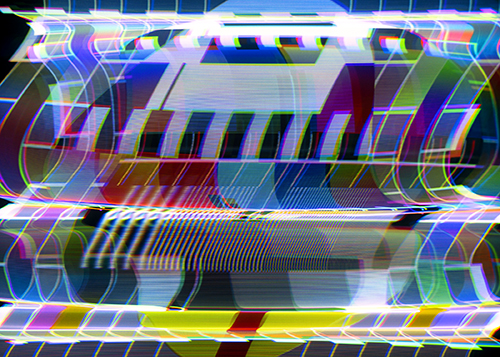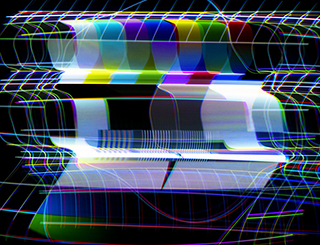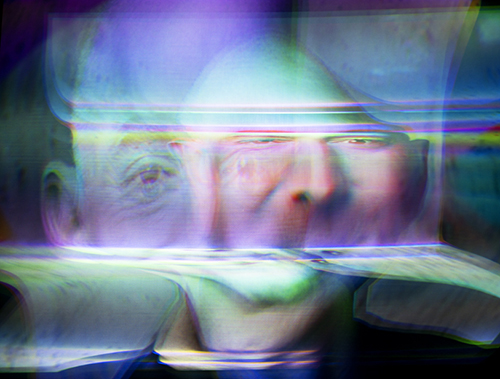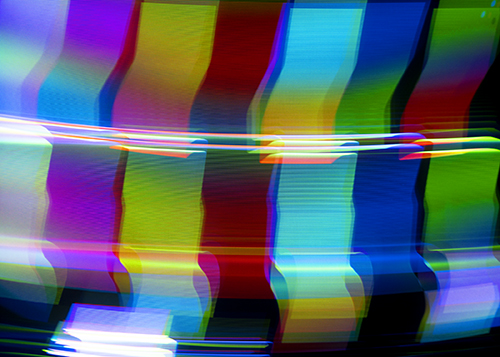CRT Flux Phaser, 2020 -
The CRT Flux Phaser is a hardware hacking and custom software project that enables highly controllable electromagnetic exploration of cathode ray tube monitors. CRTs are safely modified with 4 hand-wound electromagnets that receive amplified audio waveforms digitally synthesized to be 25% out of phase with one another. These audio waveforms are oriented around harmonics of 60Hz (the refresh rate of CRT monitors) to generate particularly captivating visual manipulations. It is used for real-time performances, installations, and edited videos. In conjunction with my RGB.VGA.VOLT instrument (which hacks the red, green, and blue cables of VGA monitors to bend audio into video for full-color synthesis), it allows for the rich electronic spectrum of cathode ray tubes to be wholly explored in endless ways.
Inspired by Nam June Paik's Wobbulator, the CRT Flux Phaser can subvert any CRT monitor into a powerful synesthetic video synthesizer. The project was developed as part of my ongoing examination of the cathode ray tube as an open system and critical alternative to restrictive contemporary consumer electronics that favor proprietary production tools, restrictive interfaces, and data-mining surveilling algorithms over user control and freedom.
It was developed under the Chicago Dirty New Media philosophy and is inspired by the international glitch, analog video, new media, and media archaeology art, theory, and preservation communities. It uses Kyle Evans' DIY electromagnet tutorial made for Cracked Ray Tube.
The project was funded by a Faculty Enrichment Grant from the School of the Art Institute of Chicago that allowed me to hire Angelina Almukhametova, Emilia Vidal-Hallett, and Joshua Spelman-Hall as studio assistants, amazing artists and made major contributions to the project.
Warning: opening a cathode ray tube is incredibly dangerous and requires electric discharging to avoid potential lethal electrocution. Do not open a CRT or attempt to recreate this instrument unless you are very familiar with how to safely discharge the device, fully insulate everything you are adding to its interior, and inspect the integrity of this insulation in the future prior to plugging it in and connecting external devices to it.
COPY-IT-RIGHT
DOCUMENTATION
CRT Flux Phaser software
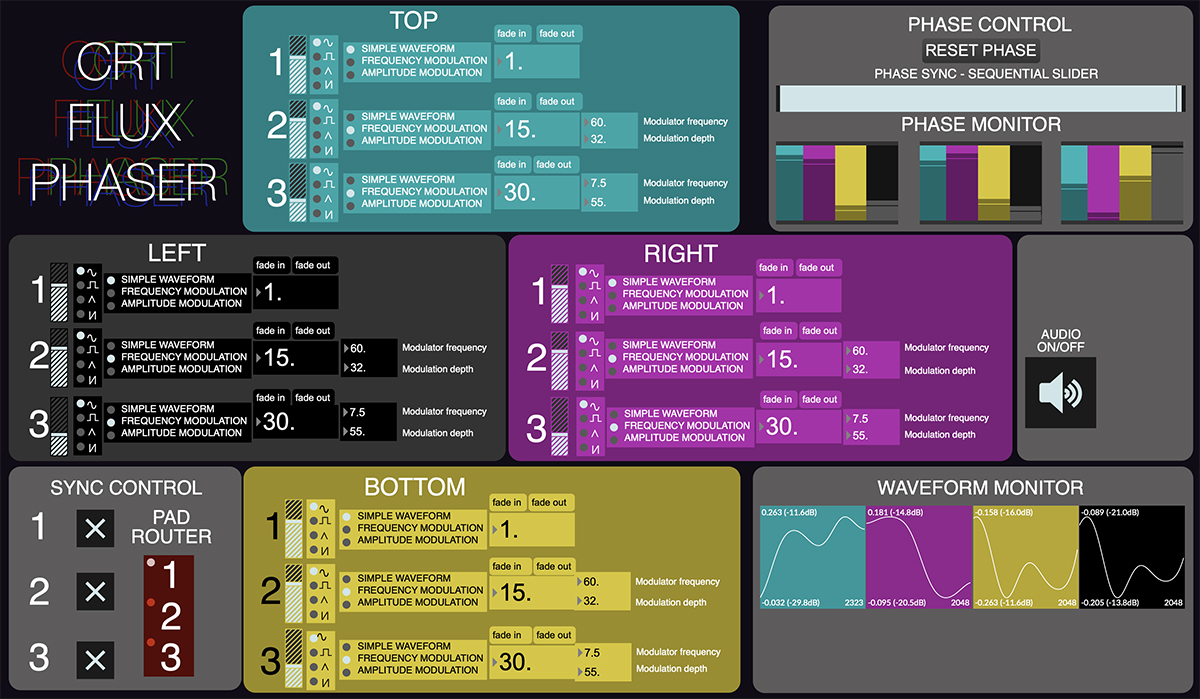
CRT Flux Phaser software was developed in Cycling '74's Max, taking advantage of its precise control over audio waveforms. The software allows audio signals to be synchronized or disconnected across all 4 magnets, with waveforms that are identical or 25% out of phase with one another. The 25% phase offset enables the most potent visual manipulation.
Audio signals are made up of up to 3 waveforms additively synthesized together. Each waveform can be a simple frequency, frequency-modulated, or amplitude-modulated, allowing for endless ways to generate distinct visuals. Waveform shapes can be switched from sinusoidal, square, triangle, or sawtooth. The amplitude and exact numerical values combine to impact the visualization. Audio waveforms being sent to magnets are also sent to speakers to create a synesthetic experience.
The software can be controlled manually or algorithmically to generate visuals in realtime. I have created an installation version using timed triggers and randomization, and a performative version using expanded interfaces and MIDI controllers.
CRT Flux Phaser hardware
DIY Electromagnets
Hand-wound electromagnets were made using the tutorial Kyle Evans developed for our project Cracked Ray Tube. The magnets are a very simple design made using a metal rod, electric drill, and electromagnetic copper wiring. Wire is coiled around the steel rod 5 times to roughly match the impedance of a commercial speaker, and electrical tape is placed between each coil.
Magnets are driven by car stereo amplifiers, which are powered by computer power supplies converted into bench power supplies. The internal auto-off safety feature of computer power supplies ensure the amplifiers don't overheat or malfunction.
Hardware modification
Magnets are placed above, to the right, below, and to the left of each CRT's electron gun. Heavy-duty hot glue is used to keep them into place. Color-coded binding posts allow each of the four audio signals to be easily connected to their proper input. The polarity of the audio signal needs go be synchronized across all monitors for proper visual callibration.
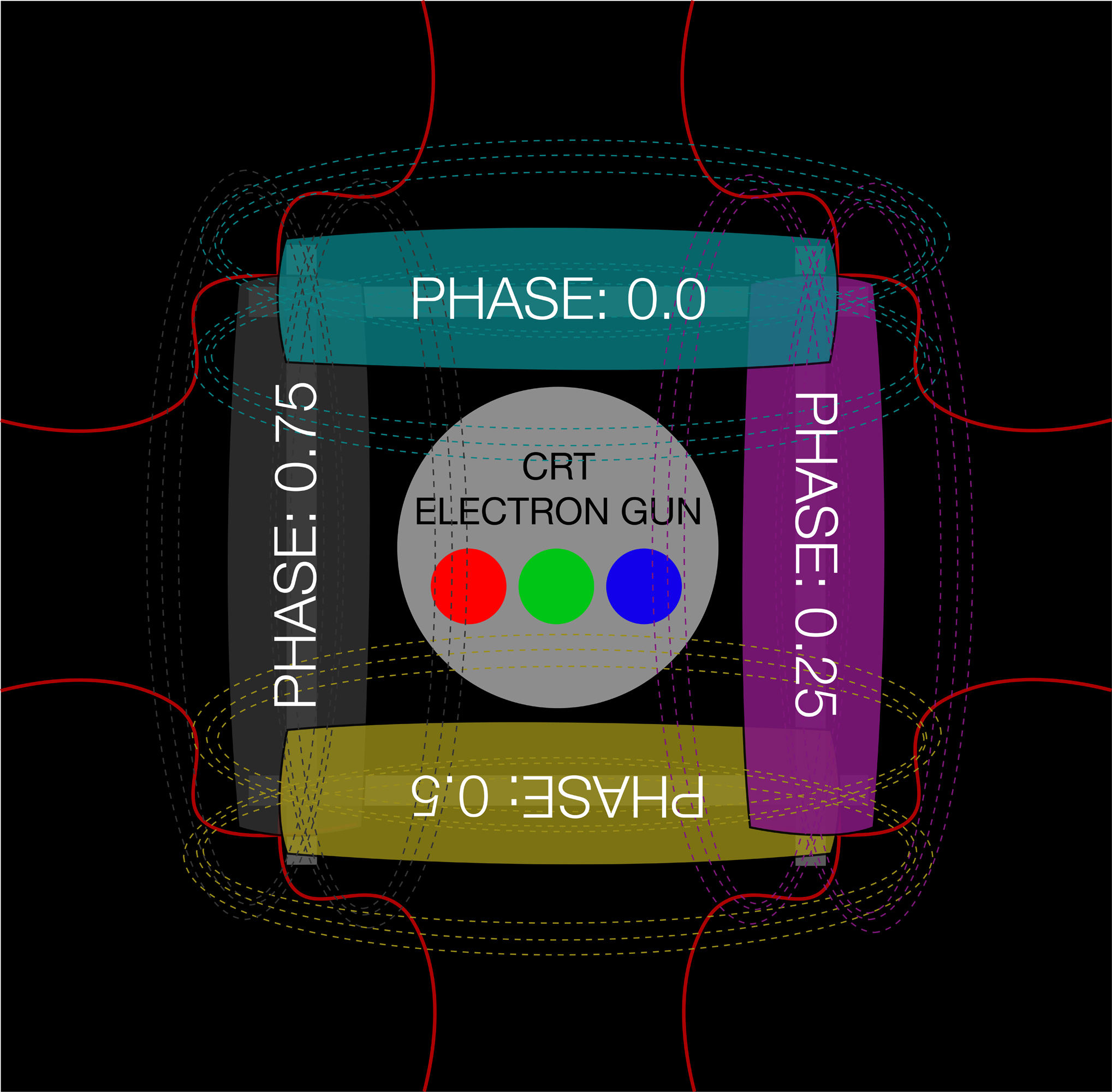
All wiring is insulated with nonconductive tubing, zip ties, and heavy-duty hot glue to ensure no conductive elements make contact with the inernal parts of the CRT. After being transported, monitors are inspected before being plugged in to ensure these safety features are still intact.
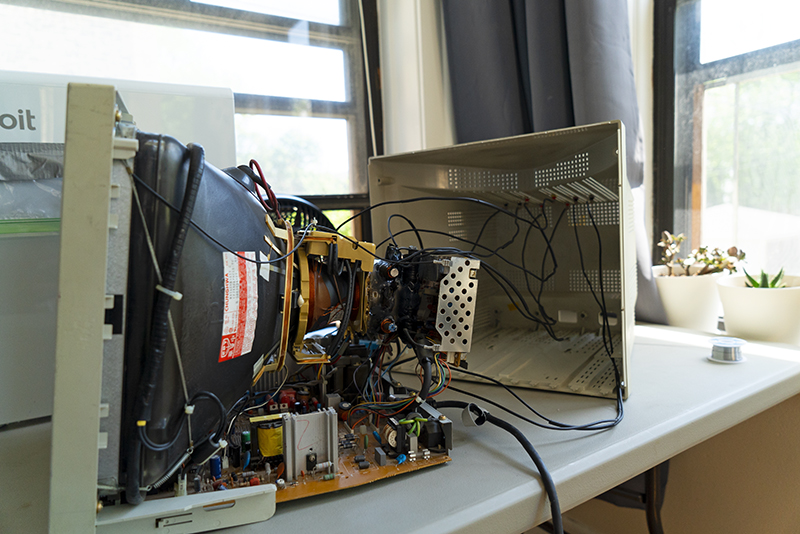
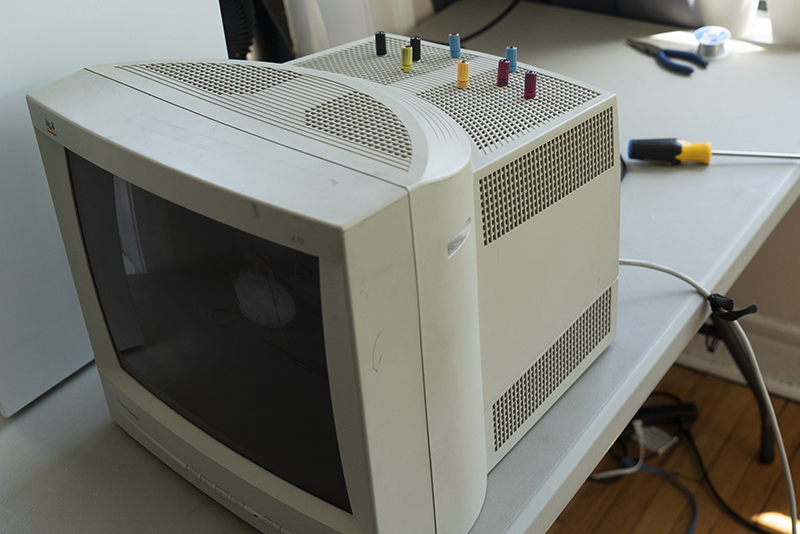
CRT Flux Phaser monitor images

